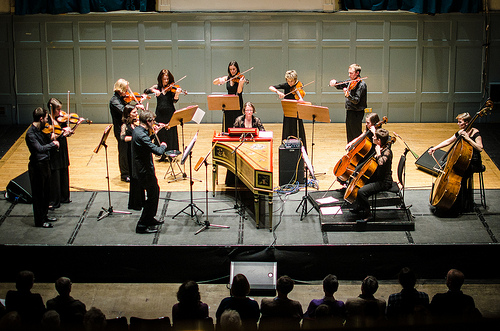
Photo: The Queen's Hall via Creative Commons (cc by-nc-nd 2.0)
Appetite for orchestra increases but finances continue to be squeezed
Attendances have grown but orchestras’ finances are being pinched by the popularity of cheaper tickets and falling public subsidy.
Despite a 16% increase in audience attendance at concerts and performances, orchestras’ earned income from ticket sales and hires has fallen by 11% in real terms since 2010. According to the Association of British Orchestras (ABO), this is the result of audiences responding to their own squeezed incomes by choosing to buy cheaper tickets. A recent survey by the ABO indicates orchestras’ finances are also under pressure from cuts in public funding, which is down by 14% in real terms over the same period, with orchestras becoming increasingly dependent on donations and sponsorship.
The ABO warns that increasing pressure on finances means that Britain’s orchestras are now finding it harder to protect their artistic quality and that many are struggling to stay in business, with some having already closed down. Michael Eakin, Chief Executive of Liverpool Philharmonic and Chair of the ABO, said: “Britain’s orchestras are doing better than expected in difficult circumstances. They are reaching a growing number of people in concerts and performances, and taking music to hundreds of thousands of children and others in the community. But funding cuts and falling income from tickets and hires are making it harder and harder for our orchestras to protect their core product: their world-leading artistic excellence…” Although income from donations has increased by almost a third, nearly 40% of those donations are restricted to projects like education and new buildings, leaving orchestras less able to invest in musical quality and making them vulnerable to a decline in philanthropy. The survey found the rise in contributed income was insufficient to balance out the falls in public funding, and overall budgets are down by 7%. Eakin said: “Without the guarantee of public funding, we will see more orchestras struggling to maintain the quality of their work.” Despite this, orchestras have so far been able to cut costs to provide increasing value for the subsidy they receive, with the result that they have delivered growing audiences, extended community outreach and made greater us of new media: the number of orchestras’ recordings for film, TV, streaming and download has more than doubled since 2010.
Join the Discussion
You must be logged in to post a comment.